While attending the recent RAPID + TCT conference and trade show, I also visited the Ultimaker booth to meet with Jamie Howard, the new president of Ultimaker North America. On the first full day of RAPID, when the show floor had officially opened and there were just a few less lectures and workshops, the company announced that Heineken is using its on-demand 3D printing solutions to create functional machine parts and custom tools for the manufacturing line at its Seville brewery in Spain.
“We’re still in the first stages of 3D printing, but we’ve already seen a reduction of costs in the applications that we found by 70-90% and also a decrease of delivery time of these applications of 70-90%. Local manufacturing helps us a lot in increasing uptime, efficiency and output. We use 3D printing to optimize the manufacturing line, create maintenance and quality control tools, and create tools for our machines which help us increase safety for our people. I think there will be even more purposes in the future,” Isabelle Haenen, Global Supply Chain Procurement at Heineken, said in a press release.
Howard told me that he would describe Heineken as a “global customer,” and that Ultimaker was already looking at additional 3D printing applications in the brewery, aside from the ones it’s already working on, like safety and line optimizations and tooling.
The brewery produces multiple brands of beers owned by Heineken, which all adds up to 500 million liters of beer annually. Engineers at the Seville brewery started off using the Ultimaker 2+ about a year ago, but have since switched to a set of Ultimaker S5 machines.
Howard explained that the project partnership with Heineken included the Ultimaker applications engineering team going through the plant to help the brewery “discover and develop applications that could be 3D printed.”
“We offer that to our Enterprise customers as a service to help them accelerate the adoption of 3D printing in the enterprise,” Howard said. “We also facilitated some advanced training in design for 3D printing so that they could actually print the parts and tools we discovered during what we call the ‘site scan’ process, and that enables the transfer of knowledge and the adoption of knowledge necessary to have them be able to do it more on their own.
“So teaching the competency to discover new applications – it expands the catalogue of parts and applications that they can actually 3D print, which increases the adoption and expands the footprint of the printers.”
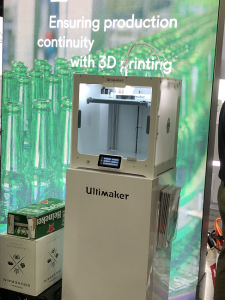 Since adopting Ultimaker’s solutions, the brewery has been able to increase its production uptime and save about 80% in production costs.
Since adopting Ultimaker’s solutions, the brewery has been able to increase its production uptime and save about 80% in production costs.
“The Heineken opportunity is really a good demonstration of the range of applications you can use the Ultimaker platform to do,” Howard said. “Our vision and mission is accelerating the world’s transition to local digital manufacturing, and in a distributed way, where you have the opportunity to leverage our software.
“The open materials platform gives us the flexibility to, at a local level, expand the range of applications with all the same accessibility to the material partners that we have through our Partner Alliance. The Heineken use case includes four categories of applications, from rapid prototyping to safety devices and also jigs, fixtures and tools on the manufacturing line, and also tooling for end-use parts – parts that fail during the production line process – to keep the uptime of the facility higher.”
I asked Howard what types of materials Heineken was using, and he showed me a device made out of Tough PLA material that is used to keep bottles from falling off the line.
“It’s light, and yet has the strength to be able to handle the weight from the bottle,” Howard explained.
“The tool that they were using before was a lot more rigid and rough, and it was sometimes causing the bottles to come off the line.”
The 3D printed version of the tool causes less friction on the bottles, which means a higher yield for Heineken as less bottles are breaking. It also saves the brewery time and money, as they can fabricate the tool on-site rather than send the design away to a third party for manufacturing. Howard also told me about one of the 3D printed safety device that’s been implemented in the brewery.
“There was a piece of equipment that required maintenance, and there was a safety latch that they built to prevent the machine from accidentally coming on during the maintenance process, to protect the workers from any injury. So the part that was printed goes over the power [switch] so you can’t inadvertently turn that machine on during the maintenance process.”
We then moved on to some parts 3D printed by other Ultimaker customers, including one for Volkswagen Autoeuropa. The tool, pictured above, was used on the manufacturing line to keep the wheel assembly from getting scratched. The tool has multiple drill guides to keep the wheel from falling off the lug nuts while it’s being screwed on, and Volkswagen was able to save a lot of time and money in upgrading to this 3D printed tool from the one they were previously using from a molding company, which would often break.
“We redesigned it…before, they were molding it in one piece. Our engineers helped them to discover that if they designed this differently, they could do it in a way that, if this part breaks, then you can just print that part, you don’t have to take the whole thing and throw it away,” Howard explained.
“All the principles of lean manufacturing are addressed in this particular piece.”
This new 3D printed version of the part reduces the amount of the time the tool was unavailable due to breakage, keeps productivity up, and also protects the wheel, so that the yield of the assembly at the end of the line is higher overall.
Take a look at more of my pictures from the Ultimaker booth at RAPID + TCT below:
Discuss this and other 3D printing topics at 3DPrintBoard.com or share your thoughts in the Facebook comments below.
[Images: Sarah Saunders, unless otherwise noted]

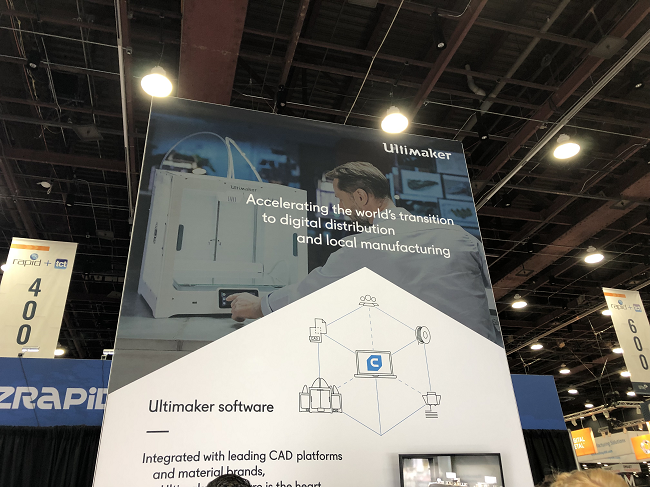
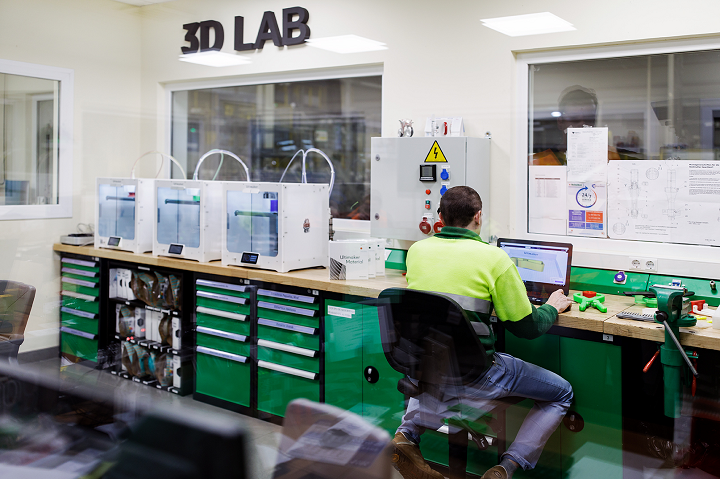
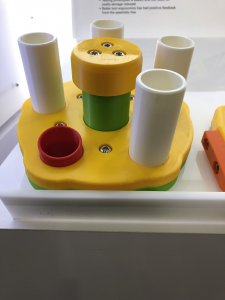
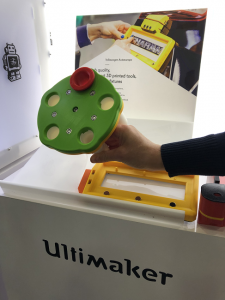
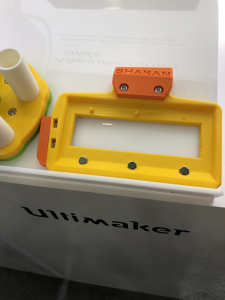
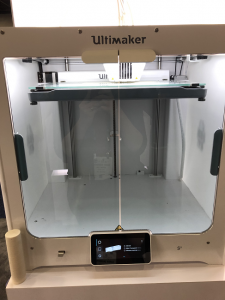
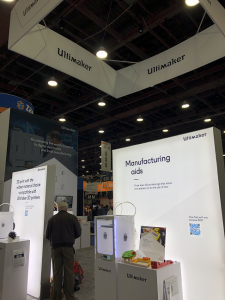

38 Replies to “RAPID 2019: Talking 3D Printing and Partnerships with Ultimaker’s Jamie Howard”
Comments are closed.